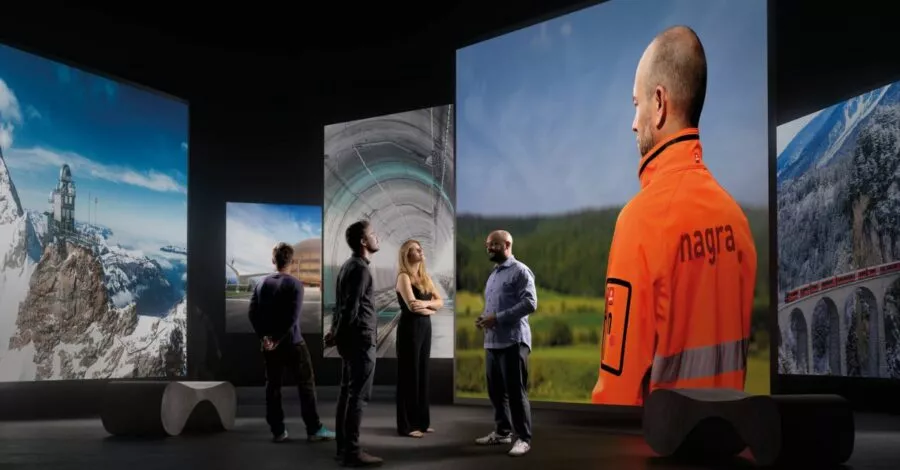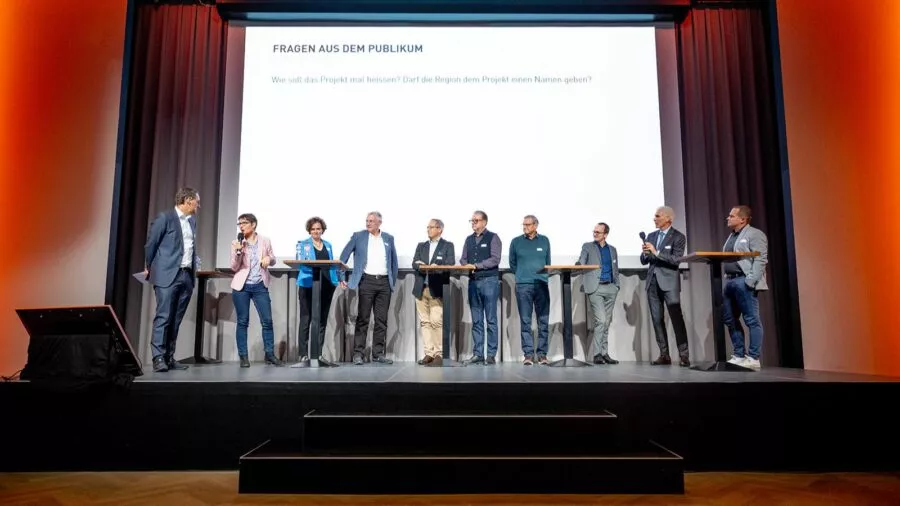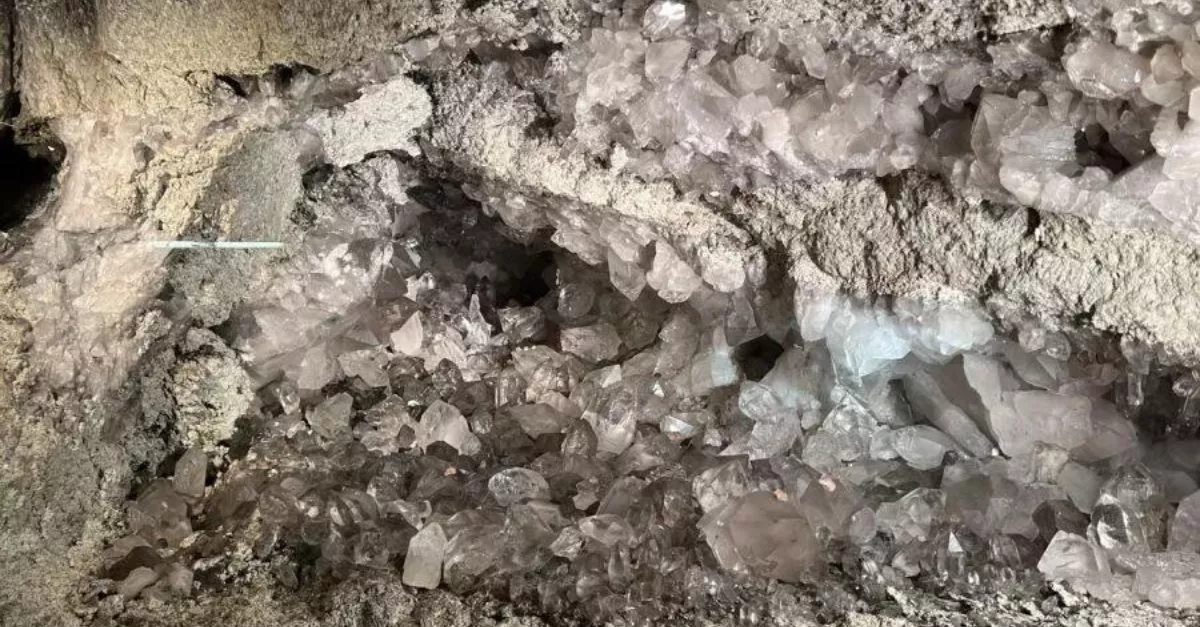
Lumos!
Lights on for a magical story. For once, not featuring radioactive waste. But barriers are still mentioned – several of them: some, like the clay barrier for the deep geological repository, are natural. Others are engineered barriers but not in the sense of our disposal canisters. No, these are magical.
Harry could smell salt and hear rushing waves; a light, chilly breeze ruffled his hair as he looked out at moonlit sea and star-strewn sky. He was standing upon a high outcrop of dark rock, water foaming and churning below him.
Hardcore fans will have immediately recognised the scene: we are on a Horcrux hunt* with Harry Potter and Hogwarts Headmaster, Albus Dumbledore. In an unnamed cave, simply known among fans as the “crystal cave”.
But what not even hardcore fans know: Grimsel’s real Cystal Cave almost became the backdrop for this scene.
*Horcruxes are objects in which black magicians like Lord Voldemort – Harry Potter’s archenemy – store part of their soul outside the body.
So go get your butterbeer and pumpkin pies, because our Public Affairs Manager, Heinz Sager, is about to open the doors for us to this previously unknown story: Alohomora!
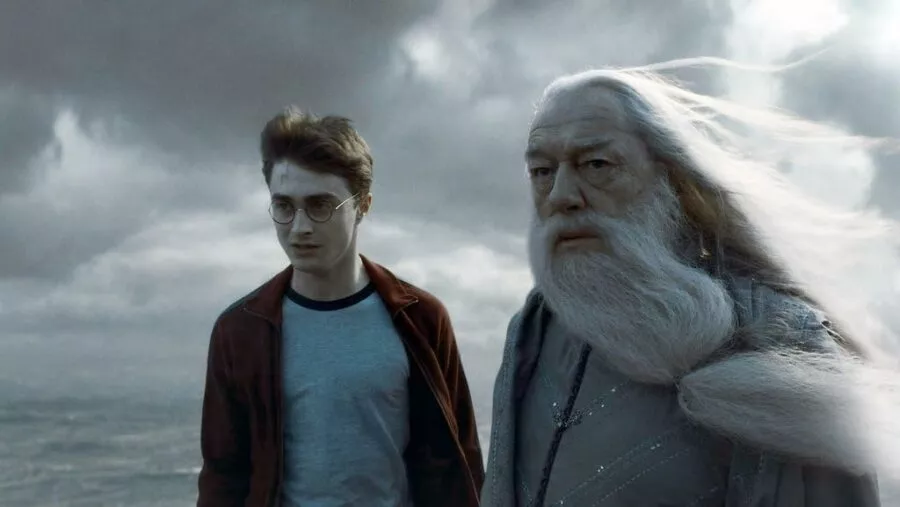
A phone call raised the heart rate
“In January 2007, I received a call from a woman named Sue Quinn,” Heinz Sager recalls. Speaking in English, she told me that she had heard about a “fantastic crystal cave” at Grimsel and wanted to visit it. “I thought nothing of it. The Crystal Cave is located next to our Grimsel Test Site, in a tunnel that belongs to the Oberhasli hydropower station. The power plant operator and Nagra already offered guided tours at that time and, upon request, visitors could also admire the Crystal Cave. It was not that unusual,” says Sager. “But when she told me why she was interested, my heart started beating a little faster.”
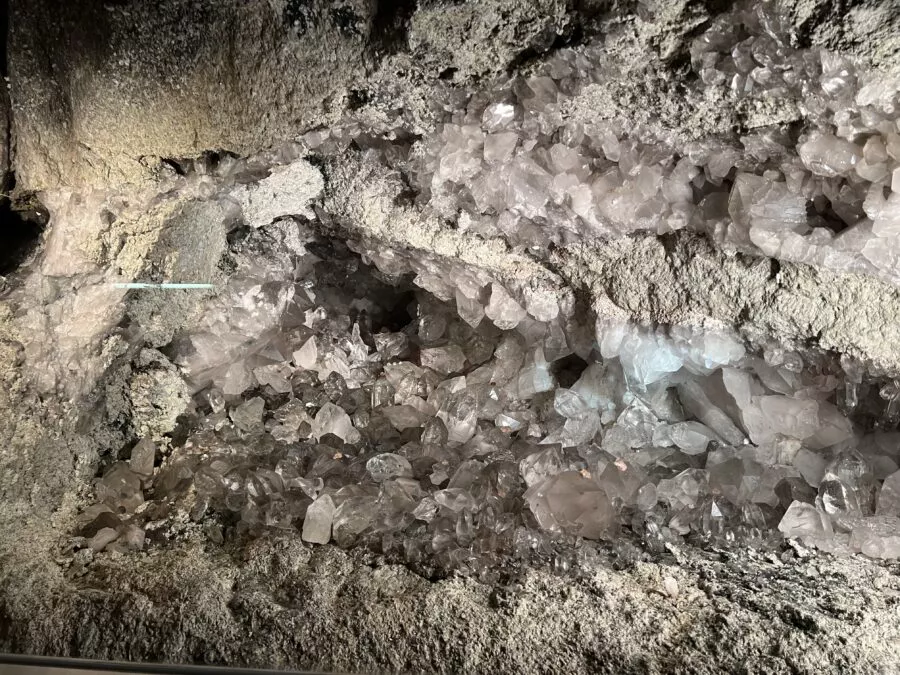
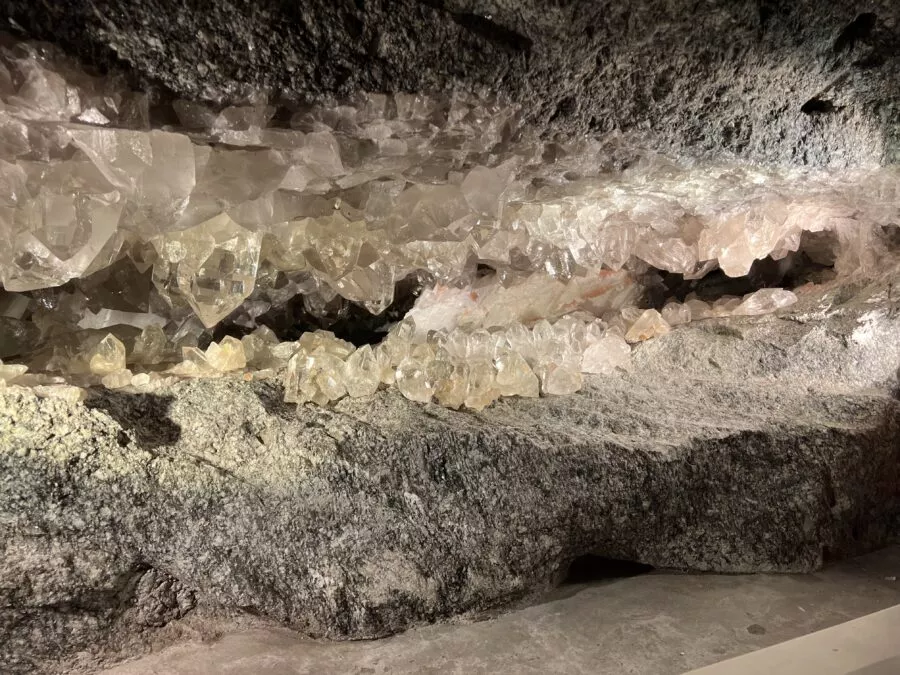
Three-time Oscar winner at Grimsel
Sue Quinn was the Supervising Location Director for the film adaptation of “Harry Potter and the Half-Blood Prince”. This is the sixth instalment of the Sorcerer’s Apprentice saga, which by this time had long since achieved world fame. “Harry Potter at Grimsel?” Sager raises his eyebrows: “We immediately realised that this had the potential to be big.”
In one scene in this sixth instalment, Hogwarts Headmaster Albus Dumbledore took his protégé Harry on a journey, leading them to an inhospitable place. The cliffs and the raging water formed natural barriers that would be very difficult for Muggles (people without magical powers) to overcome. Muggles would certainly not have made it into the cave because, in addition to a blood toll, entry required a considerable amount of magic.
For the two wizards Harry and Dumbledore, on the other hand, this was a comparatively easy task. They gained entry and went through an opening into what appeared to be complete darkness:
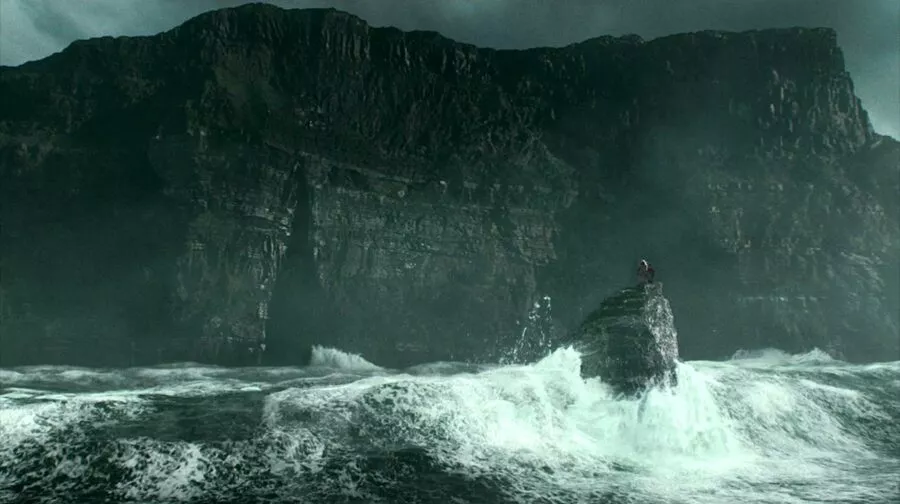
An eerie sight met their eyes: they were standing on the edge of a great black lake, so vast that Harry could not make out the distant banks, in a cavern so high that the ceiling, too, was out of sight. A misty greenish light shone far away in what looked like the middle of the lake; it was reflected in the completely still water below. The greenish glow and the light from the two wands were the only things that broke the otherwise velvety blackness… The darkness was somehow denser than normal darkness.
(Harry Potter and the Half-Blood Prince, Chapter 26 “The Cave”)
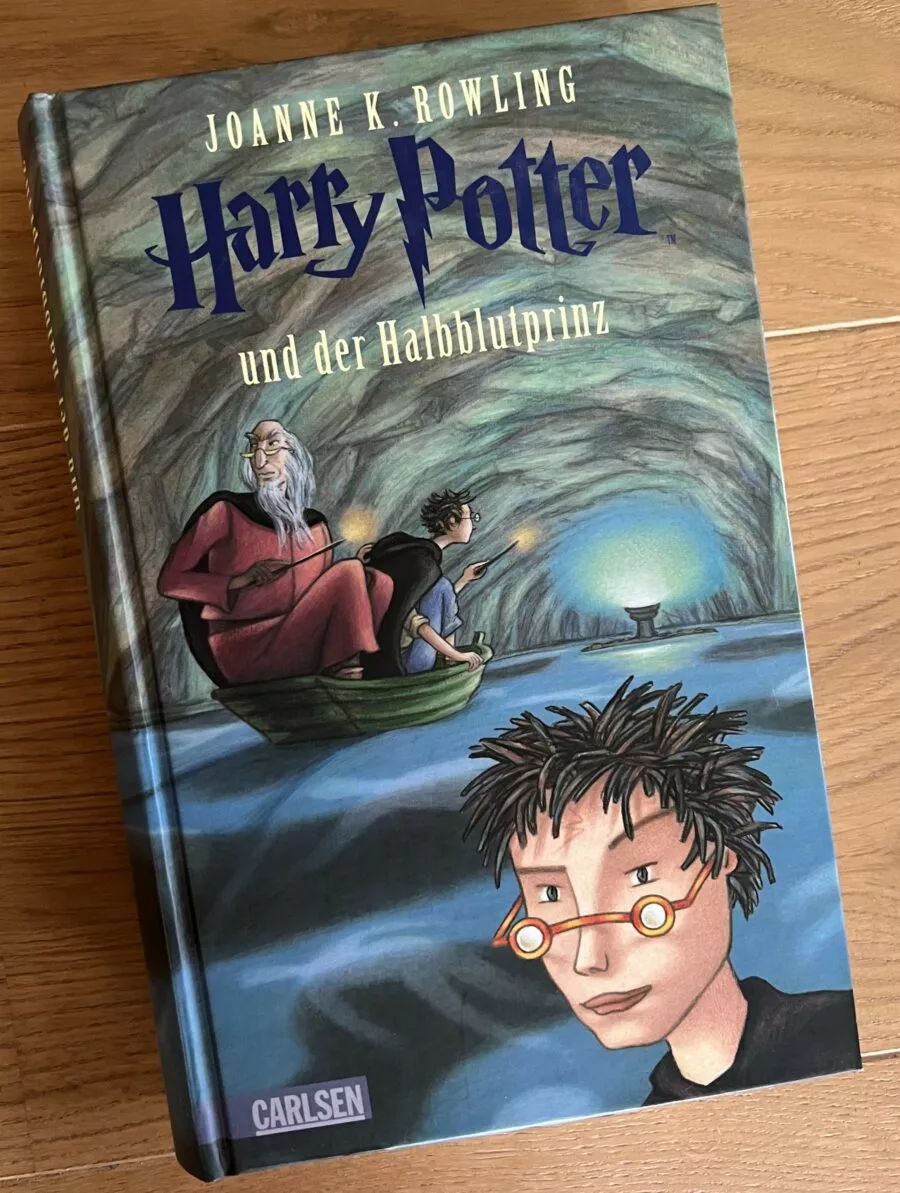
That is how J.K. Rowling imagined the cave in her book. However, the crystals seen in the film are not entirely fictitious. In the book, the goblet with which – let us reveal this much – the magic potion in the middle of the cave has to be drunk is made of crystal:
Almost absent-mindedly, Dumbledore raised his wand again, twirled it once in midair, and then caught the crystal goblet that he had conjured out of nowhere.
It was probably this description that inspired the filmmakers. Two months after the telephone conversation between Sue Quinn and Heinz Sager, in March 2007, part of the film crew visited the Grimsel Test Site and the Crystal Cave. “We had to go up by the tunnel railway because there was still snow,” Sager recalls. “This indicates the status of our guests: you have to be a real VIP to have a tour organised for you out of season.”
The presence of production designer Stuart Craig justified the VIP treatment, however. The British designer had already won three Oscars for his earlier work and was chief art director for all the Harry Potter films.
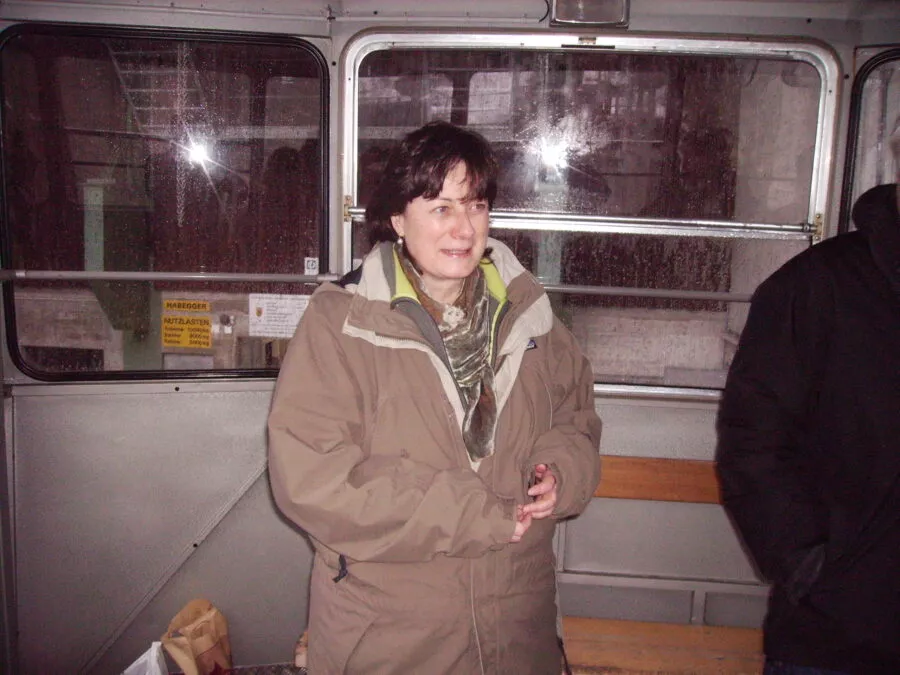
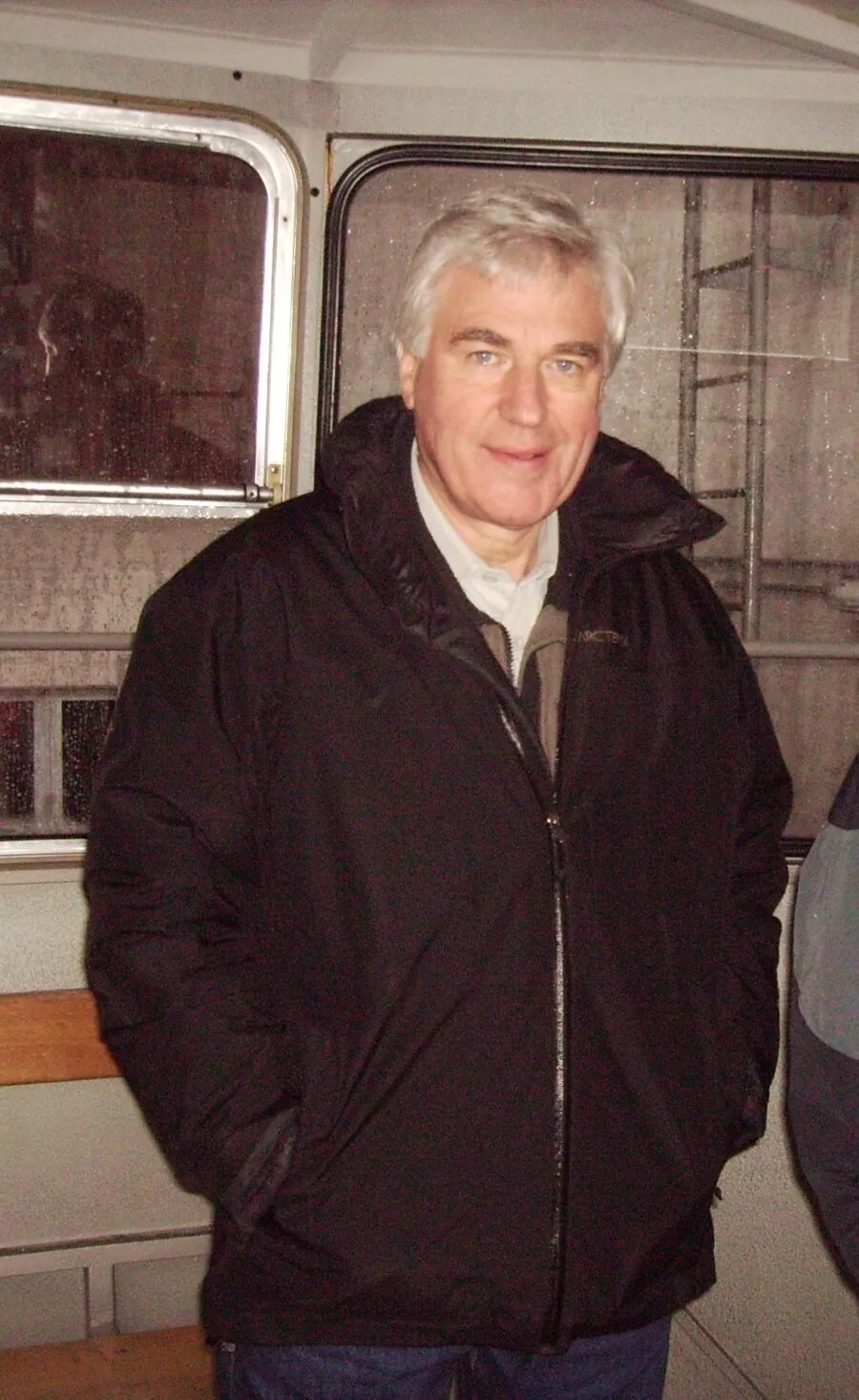
Filming in summer 2007
Sue Quinn, Stuart Craig and their film crew surveyed the Crystal Cave for around an hour and shot some footage. Heinz Sager accompanied them and picked up some of their conversations: “They were discussing a scene where Harry Potter would escape through a man-sized crystal cave.” However, while the Crystal Cave is around 14 metres long, it is no more than one metre high. Heinz Sager was assured that this would not be a problem. “I was told that Daniel Radcliffe could be inserted into the footage using blue screen technology.”
This meant that the likelihood of Harry Potter actor Daniel Radcliffe gracing the Grimsel Test Site in person had become quite small. Still, the film crew did find a section of the Crystal Cave that would have been suitable for filming. “We said goodbye in the evening and the crew left the next day,” Sager says. He was told that filming was planned for the summer of 2007.
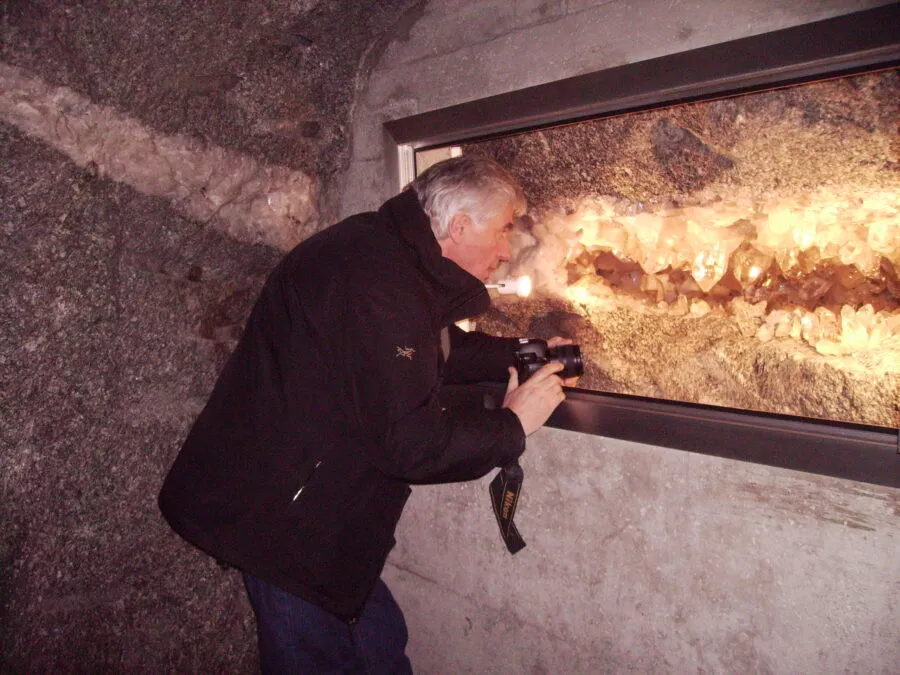
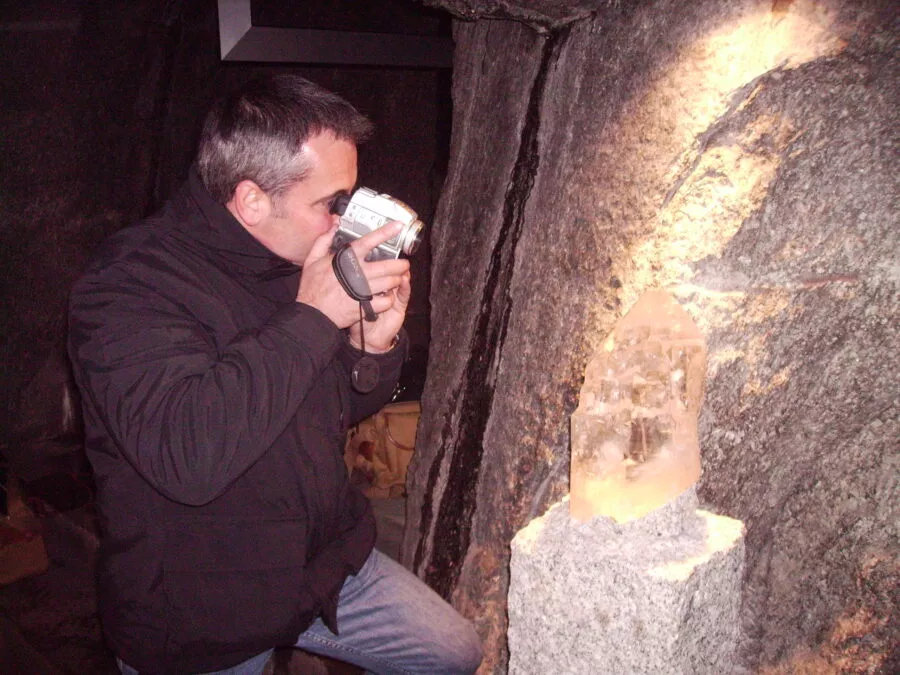
Magical Grimsel World – not just for Muggles
Unfortunately, nothing came of it: “Two weeks after the visit, Sue Quinn called to say they had found a cave in Mexico with calcite crystals that would be more suitable.”
The scene was not actually filmed in Mexico, either. Instead, the filmmakers built their own set for the scene. Their inspiration came from a salt crystal cave in Frankfurt, Germany.
But who knows: maybe the final scenes included some inspiration from the Grimsel crystals after all. By the way, you can look behind the scenes with Stuart Craig in this video:
How the crystal cave was created:
What happened next?
Ultimately, the scene in the crystal cave was not filmed at Grimsel. Fortunately, Heinz Sager was not put under a forgetting spell so he was able to tell us this magical story.
But we left Harry Potter and Albus Dumbledore behind in said crystal cave:
But though gashes appeared in their sodden rags and their icy skin, they had no blood to spill: They walked on, unfeeling, their shrunken hands outstretched toward him, and as he backed away still farther, he felt arms enclose him from behind, thin, fleshless arms cold as death, and his feet left the ground as they lifted him and began to carry him, slowly and surely, back to the water, and he knew there would be no release, that he would be drowned, and become one more dead guardian of a fragment of Voldemort’s shattered soul…
What happened to Harry and Dumbledore then? Well, by Merlin’s beard, we don’t like spoilers. For this reason, we cannot tell you at this point whether the hunt for the Horcrux was successful. Sorry. Well, not really sorry.
But hey, it’s Christmas time: grab a few chocolate frogs and Bertie Botts beans in all flavours, read the books or watch the films – or in the case of hardcore fans: time to watch it all over again!
Merry Christmas.
Nox.
Photo Copyrights: Nagra / © Warner Bros / Comet Photoshopping GmbH, Dieter Enz
Similar articles
What does Switzerland think about the deep geological repository?
Switzerland is confident that it can realise the project of the century of deep geological disposal. A recent, representative survey shows that acceptance is high across the whole of Switzerland and in the affected region.
Dealing with conflicting goals and getting young people involved
Collaboration improves the project of the century of deep geological disposal – the attendees at the “Dialogue on the Deep Geological Repository” event all agreed on this. But where are the pitfalls, what problems could arise?
